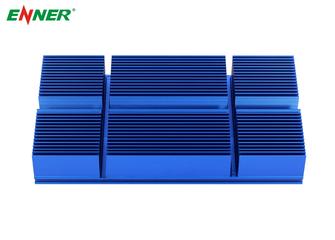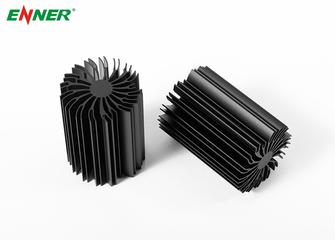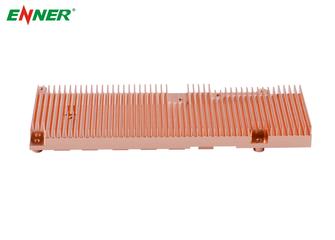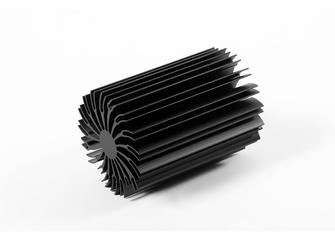The global LED lighting industry has experienced rapid growth due to its energy efficiency and sustainability benefits. As LED technologies continue to evolve, the need for efficient thermal management has become increasingly critical. Effective heat dissipation not only ensures optimal performance but also extends the lifespan and reliability of LED systems. High-efficiency thermal materials play a crucial role in addressing these challenges, enabling LEDs to meet the growing demands of modern lighting applications. This article explores the rising importance of these materials in the LED lighting industry.
The global LED lighting industry has witnessed explosive growth in recent years, driven by advancements in energy efficiency, environmental awareness, and regulatory policies pushing for greener alternatives. As the market matures and applications become more demanding—particularly in high-lumen commercial and industrial environments—the importance of managing heat within LED systems has never been more apparent.
Unlike traditional incandescent lighting, which dissipates much of its energy as visible light, LEDs convert most of their electrical energy into heat. This presents a challenge: while LEDs are energy-efficient in terms of output per watt, they are highly sensitive to temperature. Excess heat, if not effectively managed, can degrade the LED's luminous efficacy, shift color temperatures, shorten its lifespan, and in worst cases, cause thermal runaway.
This growing challenge has elevated thermal management from a secondary concern to a critical component of LED system design. At the heart of this transformation is the need for high-efficiency thermal materials—engineered substances capable of conducting, spreading, or storing heat effectively without compromising the compact size and form factors of modern lighting fixtures.

To appreciate the demand for better thermal materials, it's important to understand the root of the problem. LEDs are solid-state devices that generate heat primarily at the junction where electrons recombine. While each individual diode may produce only a small amount of heat, high-power LEDs or clusters used in commercial lighting generate significant thermal loads concentrated in small volumes.
This heat accumulation leads to several performance issues:
Here, thermal materials play a preventative role. They must rapidly transfer heat away from the source, spreading it across a larger area or dissipating it into the ambient environment through conduction, convection, or radiation. This brings us to the question: what exactly makes a thermal material efficient?

Not all thermal materials are created equal. An efficient thermal material must meet multiple performance criteria while balancing cost and manufacturability. These criteria include:
The following table summarizes some of the most commonly used thermal materials in LED applications:
| Material Type | Thermal Conductivity (W/m·K) | Common Use Case |
|---|---|---|
| Aluminum | 150–235 | Heat sinks, housings |
| Copper | ~400 | High-performance heat spreaders |
| Ceramic Composites | 20–60 | Electrically insulated substrates |
| Graphite-Based Sheets | 300–500 (in-plane) | Compact, lightweight applications |
| Phase Change Materials | Variable | Heat storage and regulation layers |
Each material offers distinct advantages depending on the design goals. For example, aluminum is widely used due to its balance of thermal conductivity, cost, and weight. Copper, while offering superior conductivity, is heavier and more expensive. Ceramics offer insulation but often have lower conductivity. The ideal choice depends on how the material integrates with the thermal design—an aspect we'll explore next.

Selecting the right material is only the first step. The next challenge lies in integrating these materials into effective thermal management systems. Engineers are increasingly turning to advanced technologies that maximize the thermal potential of base materials through smart design.
Key innovations include:
These technologies are not mutually exclusive; in fact, the best designs often combine multiple approaches to balance heat capacity, weight, size, and cost. Such integration ensures the thermal system aligns with the lighting product's performance goals.
As LED systems grow more complex, thermal management must be considered not as an afterthought, but as a core part of the product development cycle. This includes the early use of thermal simulation software to predict temperature distributions, optimize heat paths, and test different material configurations before physical prototyping.
Designers must also account for the interaction between thermal systems and mechanical or electrical components. For example, the geometry of the heat sink must complement airflow patterns, while thermal adhesives must bond securely without interfering with optical performance.
Key practices in thermal integration include:
This comprehensive approach to design ensures that high-performance thermal materials deliver their full potential within real-world lighting applications.

As demand for high-output, long-life, and compact LED solutions continues to rise across global markets, the role of thermal management will only grow in importance. High-efficiency thermal materials, when intelligently selected and effectively integrated, enable these systems to perform reliably even under the most demanding conditions.
Companies specializing in thermal solutions—like Enner, with deep expertise in materials engineering, thermal simulation, rapid prototyping, and system integration—play a pivotal role in supporting manufacturers across the LED value chain. By delivering reliable, high-performance thermal management products, Enner helps ensure that LED lighting systems remain efficient, safe, and long-lasting—meeting the exacting standards of today's global lighting industry.
By continuing to use the site you agree to our privacy policy Terms and Conditions.